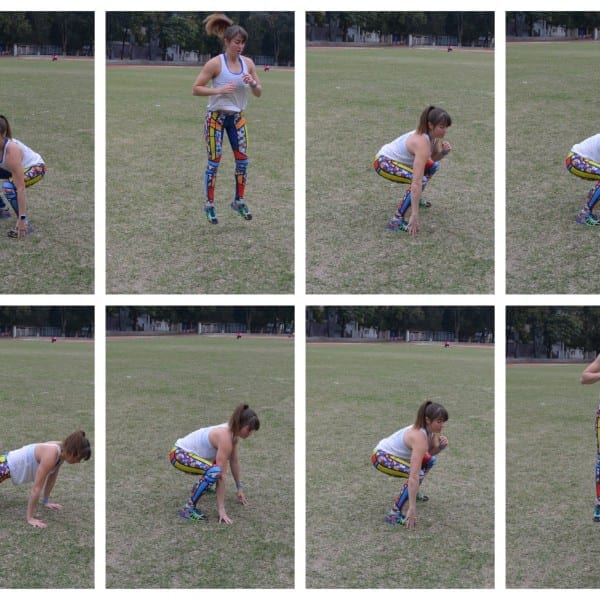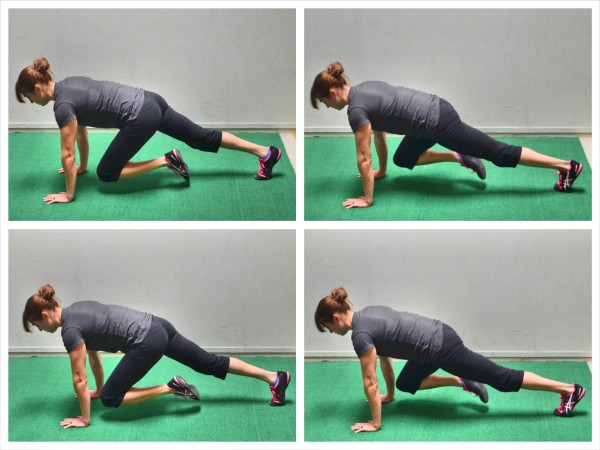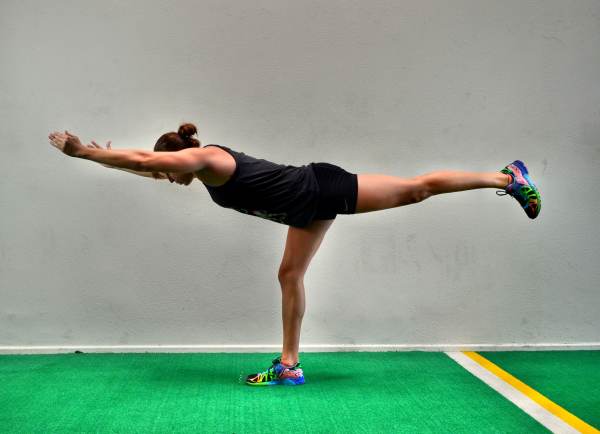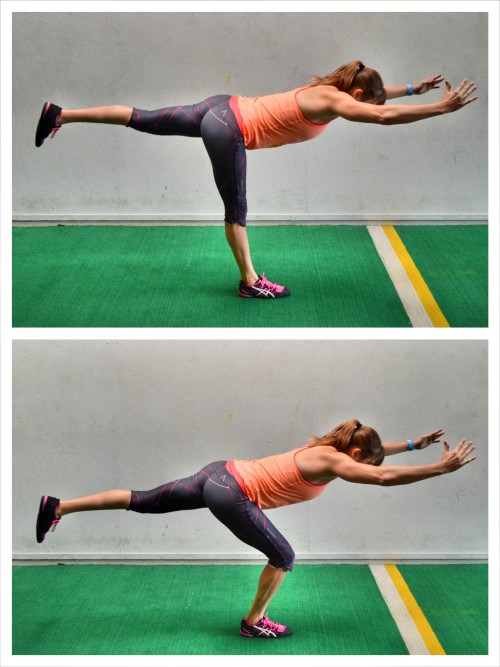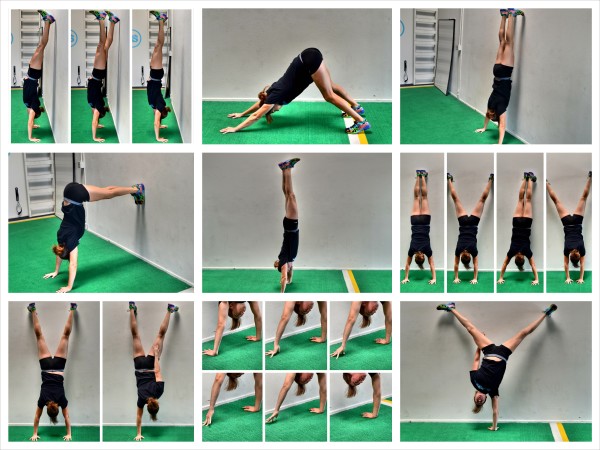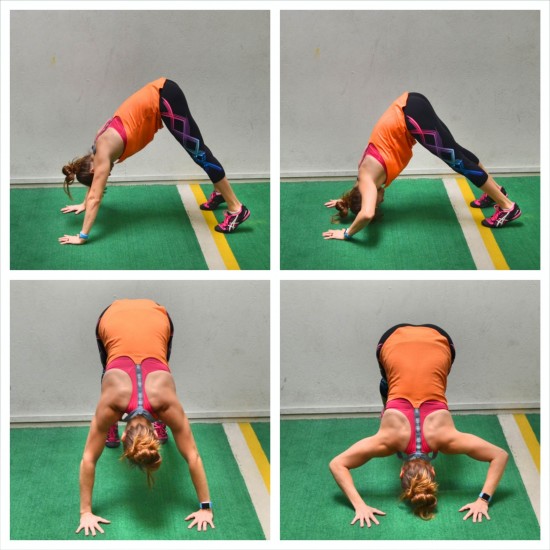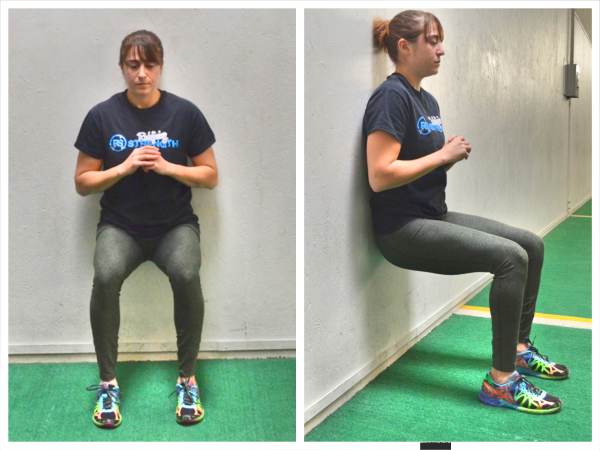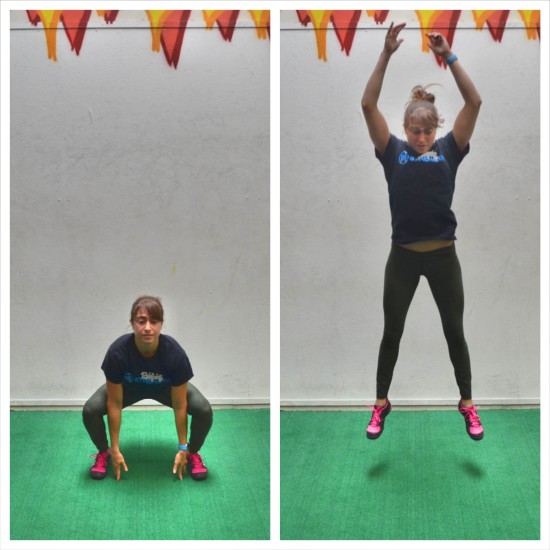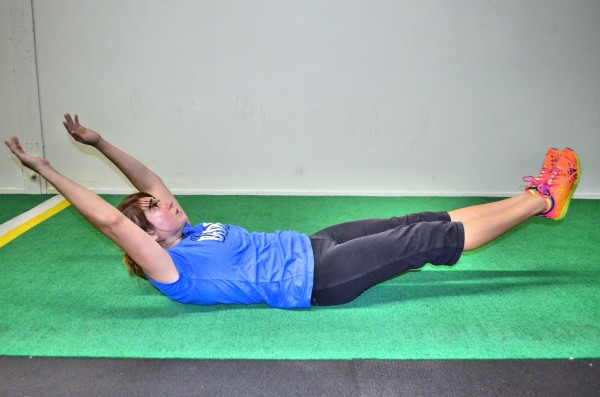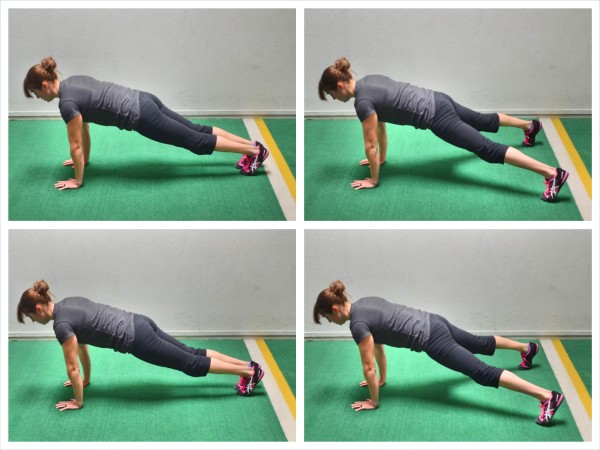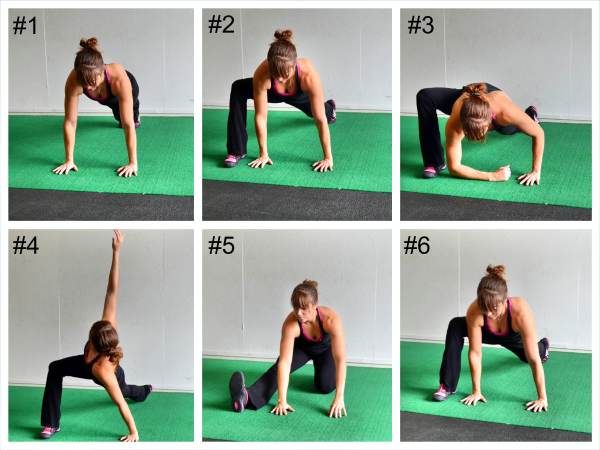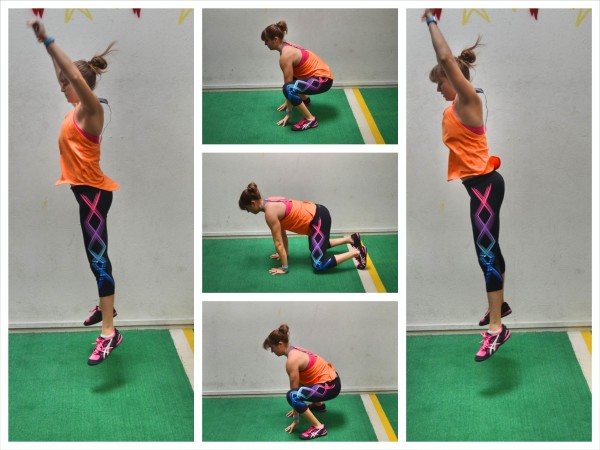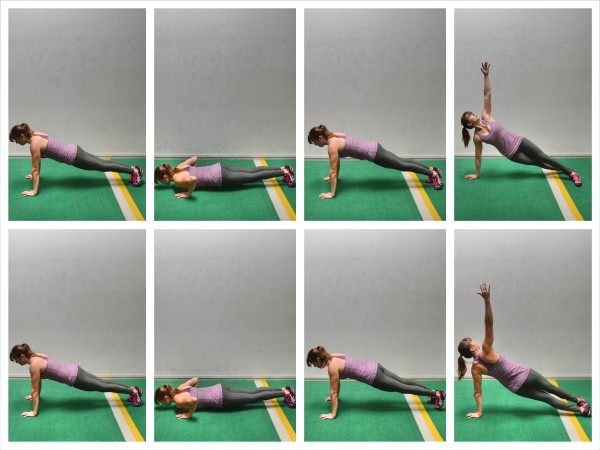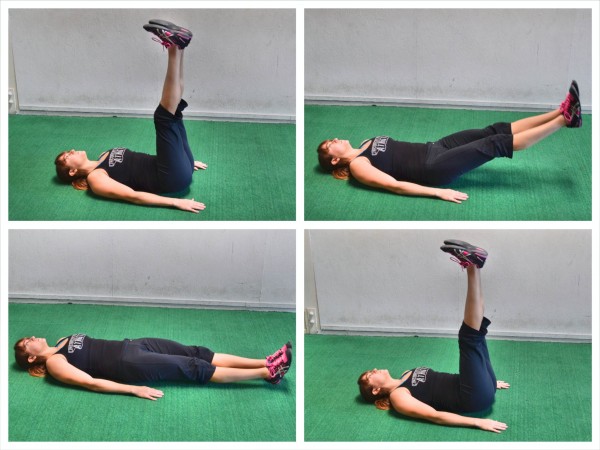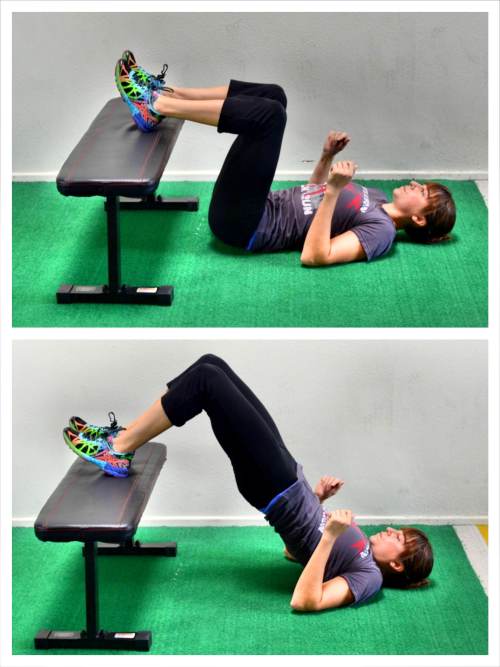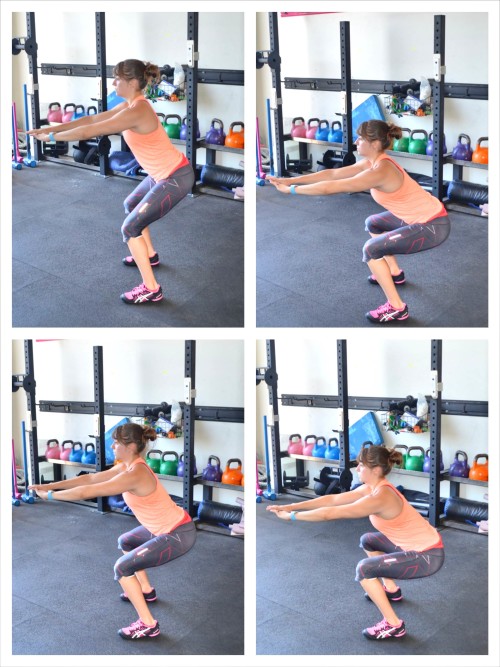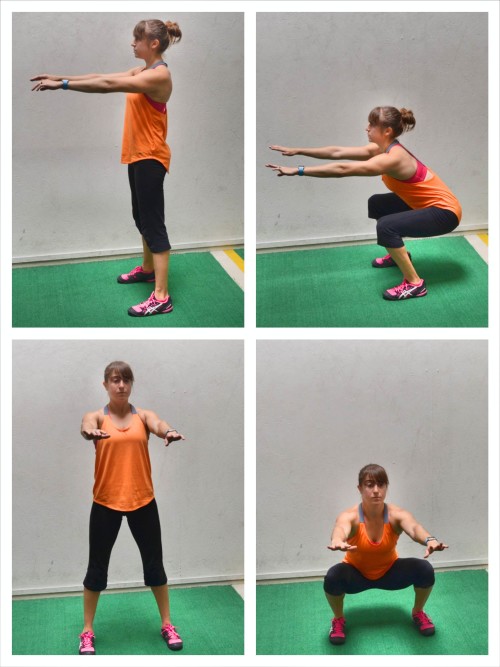WARM UP
Stretch and Roll Out:
Calves
Quads
Groin
Hamstring
Hips/Glutes
Back
Shoulders
Wrists
WORKOUT
Complete 3-5 rounds of the circuit below. Move straight from the hold to the reps then to the next hold. If the move is unilateral like the Warrior III, do the hold then the reps on one side before switching to the other side. Rest only if needed. Rest up to 1 minute between rounds if needed and even stretch out.
CIRCUIT:
20-30 seconds each side Warrior III Hold
15-20 reps per side Warrior III Squats
20-30 seconds Handstand Hold
10-15 reps Pike Push Ups
20-30 seconds Wall Sit
15-20 reps Squat Jumps
20-30 seconds Banana
10-15 reps TFW Sit Ups
20-30 seconds Glute Bridge Hold
20 reps Glute Bridges
COOL DOWN
Stretch and Roll Out:
Calves
Quads
Groin
Hamstring
Hips/Glutes
Back
Shoulders
NOTES:
Shorten the holds or reps if needed, but try not to really rest between the holds and reps. Rest after both are complete if needed, but not between the hold and reps.
EXERCISE DESCRIPTIONS:
Warrior III Hold – To do Warrior III, start standing tall with your feet together. Then move to balancing on one foot and hinge over at the hips, leaning your torso forward as you push your butt back and lift your back leg straight toward the wall behind you. As you lift your leg and hinge over, make sure to keep your hips square to the ground. Do not rotate open. Also, pretend you are driving the foot of the lifted leg straight back into the wall behind you as you reach your head toward the wall in front of you. Maintain a nice straight line from your head to your raised heel, making sure to keep your back flat and your core tight as you hold this hinged over position. As you hold, reach your hands overhead in front of you, out to your sides or back toward your heels. Breathe and relax into the stretch and try to straighten your standing leg as much as you can while keeping your hips square to the ground and your body in a nice straight line. Feel your foot working to grip the ground and your leg stretching while your glutes and core work to keep you balanced. Do not let your back round or your other foot touch down as you hold. Only straighten your standing leg as much as you can while still maintaining balance and a straight line with your body. Beginners may need to reach back toward their foot instead of out in front of them or they may want to use a wall behind them to help them balance. To use a wall for slight assistance, stand with a wall behind you and when you hinge over have the lifted foot lightly touch the wall behind you to help you balance.

Warrior III Squats – To do Warrior III Squats, set up in the Warrior III position, balance on one leg then hinge over so that your chest is parallel to the ground. Reach your raised leg back toward the wall behind you as you keep your hips square to the ground and straighten your standing leg as much as you can. Then reach your hands overhead toward the wall in front of you or out to the sides or even back toward your feet. From this Warrior III position, bend your standing leg to perform a small squat. Make sure to keep your raised leg up and reaching toward the wall behind you as you stay in that hinged over position as you squat. Do not start to stand up as you squat. Straighten your standing leg back out and then repeat the small squat. The lower you squat as you maintain that Warrior III position, the harder the move will be. Also, the more you completely straighten your standing leg, the harder the move will be. Complete all reps on one side before switching. Do not let your hips open up as you squat. Also, do not go forward onto your toes or round your back. The move doesn’t have to be super big to have benefit!

Handstand Hold – The most basic Handstand Hold is very similar to the downward dog. Start on your hands and knees. Then push back and up, raising your hips up toward the ceiling as you straighten your arms and press your chest back toward your legs. Focus on getting your back flat and a nice straight line from the heels of your hands up to your tailbone. You want your arms to be in line with your torso (aka biceps by the ears). Push your butt back and up. Do not worry about keeping your legs straight like in downward dog. Also, do not walk your feet in toward your hands. Push your butt up and create a nice straight line with your back. To advance that basic hold, place your feet up on a table. Walk your hands in toward the table and press your butt up in the air. You want to straighten your arms so your head is hanging down between your hands straight down toward the ground. Create a nice straight line from your palms up to your tailbone. Do not worry about straightening your legs. The higher the box, the harder the move. To do a Full Assisted Handstand, you can walk your feet up a wall. The closer to the wall you get, the harder the move will be. From there, you can move into a full handstand. No matter which variation you are currently able to do, you are going to create stability and strength throughout your core by doing Handstand Holds – Here are some more variations.

Pike Push Ups – To do the Basic Pike Push Up, start in the Downward Dog position and then slightly walk your feet in toward your hands so that you can drop your head straight down toward the ground between your hands. You can also do this move with your feet up on a bench to make it more challenging or you can even do a full handstand push up. Then in this piked position, bend your arms and drop your head straight down toward the ground between your hands. Lower down and then press back up, fully extending your arms. Make sure you are performing a vertical push and not turning this into more of a horizontal movement. If you are pressing back instead of up, try adjusting your feet or regressing the movement. You want to mimic a handstand movement even if your feet are on the ground. Repeat, dropping your head straight down between your hands.

Wall Sit – To do the Wall Sit, stand with your back to a wall and your feet about hip-width apart. You can change up your exact foot position to hit slightly different aspects of your quads. Then sink down into a squat, pressing your back into the wall behind you as you try to get your quads as close to parallel to the ground as possible. When you sink into the squat, keep your ankles aligned under your knees and drive back into the wall through your entire foot. Do not rock forward onto your toes. Also, do not sink past parallel. Hold there and drive your back into the wall. If you start to feel this in your low back, make sure to brace your abs. Also, do not hunch or lean forward as you hold. Stay up nice and tall. To make this move easier, don’t sink as low in the squat or move your feet out just a bit from the wall. Do not let your ankles get too far out in front of your knees though.

Squat Jumps – You can regress the movement and do bodyweight squats as well. To do Squat Jumps, stand with your feet between hip-width and shoulder-width apart. Sit your butt down and back into as low a squat as you can with good form (aka your heels stay down and your chest stays up and your knees don’t cave in). You can then swing your arms back as you squat or reach your hands down to touch the ground. Then explode up out of the squat and jump as high off the ground as possible. You can swing your arms and reach your hands overhead to help propel you up. As you jump, extend your body fully. As you land, sink right back into the squat so you can explode right back up. Do not land with your legs straight. Make sure to bend your knees as you land and try to land softly to protect your knees. Beginners may need to rest between each rep; however, that doesn’t mean landing with your legs straight. You should never land with your legs completely locked. Bend your knees to help you absorb the impact of landing even if you pause between jumps. To make the move harder, jump up and sink right back into the squat to repeat as quickly as possible. Really focus on a soft landing and then exploding quickly into as high a jump as you can.

Banana – To do the Banana, and improve your mind-body connection so that you can engage your entire core (everything from your shoulders to your knees), start lying on your back with your legs out straight and your arms reaching overhead on the ground. Your legs should be together and your arms should be right by your head. Press your low back into the ground and draw your belly button in toward your spine as you lift your legs and arms up off the ground. Your neck and head should be in a neutral position between your arms and your legs should be together and out straight a few inches off the ground. Hold here, squeezing your legs together as you try to get your shoulder blades up off the ground while keeping your low back against the ground and abs engaged. Beginners may find they need to lift their legs up higher toward the ceiling or bend their knees to keep their low back against the ground and their abs engaged. Beginners can also try an easier variation of the Pelvic Tilt if they feel their low back taking over.

TFW Sit Ups – To do the TFW Sit Up, lie on your back with your legs out straight in front of you and your hands in under your chin. Then sit up, bringing your knees in as you move to place your hands on your shins. As you come to a tucked seated position, place your feet on the ground. Don’t swing your arms overhead to sit up. You can move your arms from in under your chin to around your legs at the top while you are seated. Then lie back down, straightening your legs back out in front of you as you bring your hands back in under your chin. With this Sit Up Variation, you can release at the bottom and touch your shoulders and heels down. Repeat, sitting back up as you bring your knees back in, grabbing your shins. Move as quickly as possible. As you sit up and lie back down, make sure not to arch your low back. Press it into the ground and feel your abs working. If your low back takes over, try a Basic Sit Up or even a pelvic tilt progression.

Glute Bridge Hold – To do the Basic Glute Bridge Hold, bend your knees and put your feet flat on the ground just close enough that you can graze your heels with your fingertips when you stretch your arms down by your side. Your feet should be about hip-width apart. You can change up how far your heels are from your butt to make sure you feel your glutes powering the bridge. If your hips are tight, you may need to move your feet further out. Just make sure you don’t feel your hamstrings taking over. Bend your elbows to 90 degrees so that only your upper arms are on the ground then drive up through your heels and upper back and arm to lift your glutes up off the ground. Drive your hips up as high as possible, squeezing the glutes hard. Brace your abs and extend your hips so that you don’t hyperextend your back. Do not push backward off your heels. Make sure you are driving straight up almost as if driving your knees forward over your toes. Also, make sure that your knees don’t cave in or fall open. Squeeze your glutes and hold at the top. Concentrate on feeling your glutes work. Don’t just go through the motions. Actually think about the muscles that should be working as you hold.

Glute Bridges – To do the Basic Glute Bridge, lie on your back and bend your knees and put your feet flat on the ground just close enough that you can graze your heels with your fingertips when you stretch your arms down by your side. Your feet should be about hip-width apart. You may need to adjust your exact foot positioning based on how tight or mobile your hips are. You can move your feet slightly away from your fingertips, but just make sure you don’t move them so far away that you feel your hamstrings taking over. Bend your elbows to 90 degrees so that only your upper arms are on the ground. This will help you really be able to drive down with your elbows, upper arms and back to help you bridge straight up instead of pushing yourself backward. Then bridge up, driving through your heels and upper back and arms to lift your glutes up off the ground. Drive your hips up as high as possible, squeezing your glutes hard as you brace your abs. Keep your belly button drawn in so you don’t hyperextend your back. Focus and consciously squeeze your glutes at the top. You may even want to perform the pelvic tilt before you lift to help keep your abs engaged throughout the bridge so that your low back doesn’t take over. When you bridge, do not push backward off your heels. Make sure you are driving straight up and that your knees aren’t caving in. Even think about driving your knees forward over your toes to help extend your hips and prevent you from pushing yourself backward. Squeeze your glutes for second or two at the top and lower all the way back down to the ground before repeating. Do not rush through the move. Concentrate on feeling your glutes engage and on keeping your abs braced. You do not want your low back to take over. If you do feel your low back or don’t feel your glutes, stop and reset and focus on engaging them a little extra at the top!

